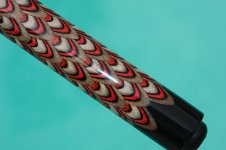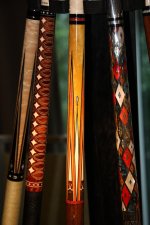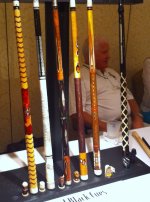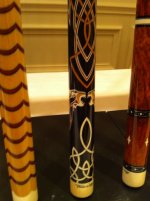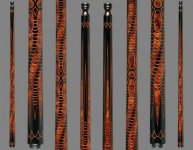I have seen cues with elaborate twisted points and intertwined veneers. It makes you think "How did he do that?" Some of these that I have seen are almost optical illusions...but not quite.
I am wondering if anybody has seen, and can post pics of, such a cue that actually achieves an optical illusion with veneers, inlays, splices, rings, or other such work..
I am thinking of maybe an "Escher theme" cue or something like that I guess.
An example might be something like a cue with an "impossible dovetail" LINK
Anything?
.
I am wondering if anybody has seen, and can post pics of, such a cue that actually achieves an optical illusion with veneers, inlays, splices, rings, or other such work..
I am thinking of maybe an "Escher theme" cue or something like that I guess.
An example might be something like a cue with an "impossible dovetail" LINK
Anything?
.




